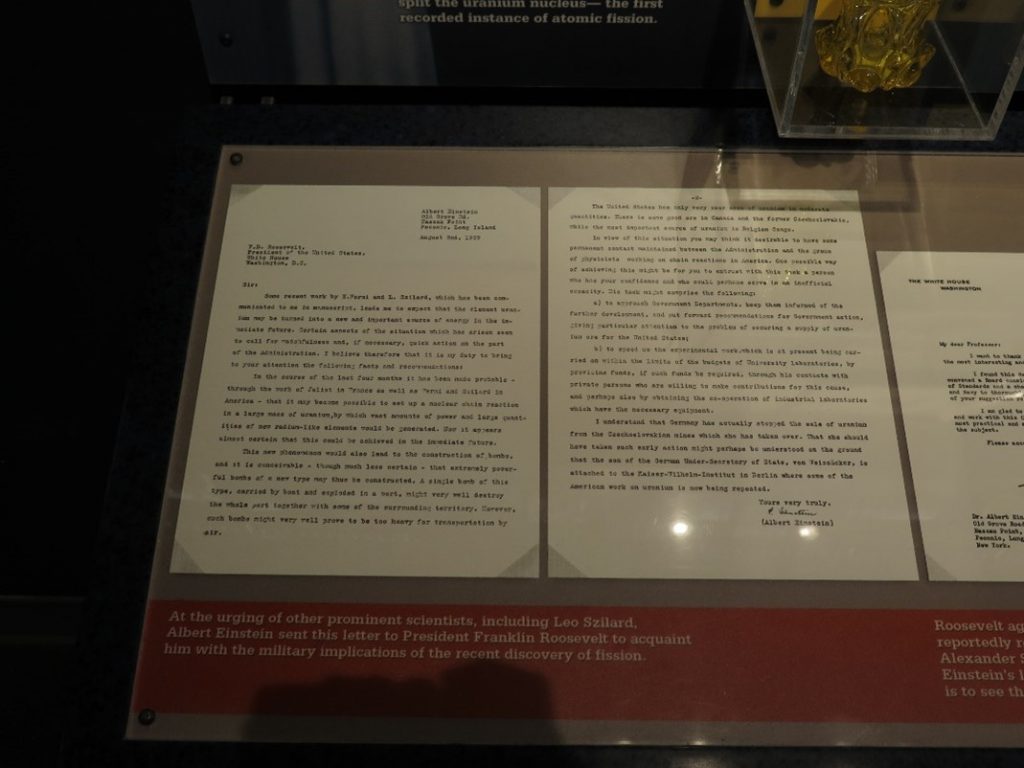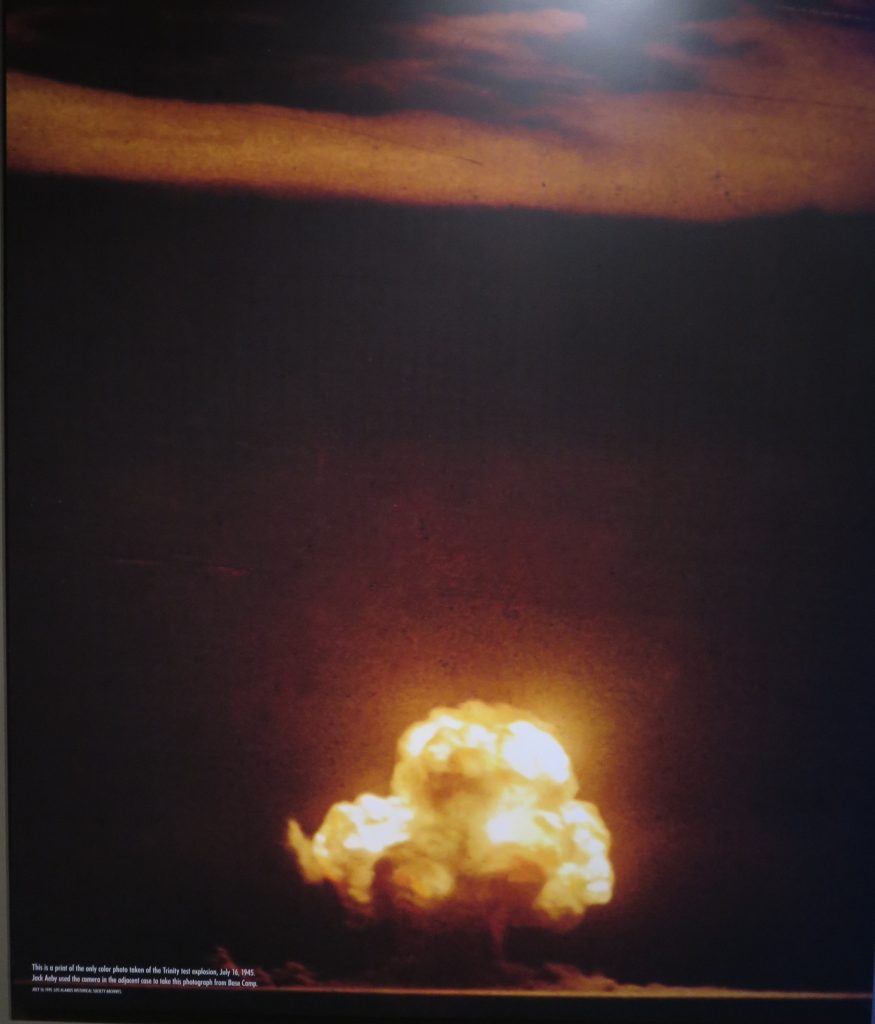169 Atomic Fission, Albert Einstein, and the Atomic Bomb
Albert Einstein was a well-known physicist concerned about research into the splitting of the atom (nuclear fission) and the threat of the atomic bomb by Nazi Germany.
Einstein Letter
In the 1930s, physicists from Europe fled the threat of Nazi Germany including Leo Szilard, Edward Teller, and Eugene Wigner. The physicists understood that Nazi Germany was researching atomic fission to build an atomic bomb. The physicists felt the ethical need to inform the American government about this threat and reached out to the German American physicist Albert Einstein. (References https://www.osti.gov/opennet/manhattan-project-history/Events/1939-1942/einstein_letter.htm accessed 3/23/2022; http://www.fdrlibrary.marist.edu/archives/pdfs/docsworldwar.pdf Accessed 3/23/2022)
In 1939, the physicists wrote a letter to warn the US President Franklin D. Roosevelt and Albert Einstein agreed to sign the letter to give it more importance in the eyes of the US government. The letter also encouraged the President to promote nuclear research in the US.

Manhattan Project

The “Manhattan project” was the US government’s effort to research how to build an atomic bomb and actually build it. It is named after the Army Corps of Engineers “Manhattan Engineer District” (Ref https://www.osti.gov/opennet/manhattan-project-history/Events/1942/1942.htm). The atomic explosion on July 16th of 1945, code named “Trinity,” can be considered the first successful nuclear weapon (https://en.wikipedia.org/wiki/Trinity_(nuclear_test)). What led to the Manhattan project? Many events. One event was a meeting between Vannevar Bush and the US President in October 1941. The president received information that building an atomic bomb was feasible. However, at that time, the president wanted only research and development done, nothing further. (reference https://www.osti.gov/opennet/manhattan-project-history/Events/1939-1942/tentative_decision_build.htm). In December 1942, US President Roosevelt approved the building of the atomic bomb (https://www.osti.gov/opennet/manhattan-project-history/Events/1942/final_approval_build.htm).
Einstein’s Treatment and Reactions
Einstein was not allowed to work on the Manhattan project (https://www.amnh.org/exhibitions/einstein/peace-and-war/the-manhattan-project). The US government considered him a security risk. He was distraught after the first atomic bomb destroyed the city of Hiroshima, Japan. He also regretted encouraging the US government into research about nuclear weapons based on hindsight. If he would have known that Nazi Germany would not succeed in building the atomic bomb, then he would not have encouraged the US government into nuclear weapons research. (https://www.amnh.org/exhibitions/einstein/peace-and-war/the-manhattan-project)
This historical experience leads to ethical questions such as:
- Should scientists get involved in politics?
- Should scientists encourage research that can be misused?
- Do scientists have individual ethical responsibility?
- Do scientists have a societal ethical responsibility?
- Should scientists do any research that is possible, or should there be limitations?
- Should society tell scientists what research is unethical and off-limits?
There is also a theater play about the ethical questions about science and atomic bomb entitled “Copenhagen: a Play about the Science, Politics, and Morality of Atomic Weapons” (Reference https://en.wikipedia.org/wiki/Copenhagen_(play) accessed 3/23/2022; https://www.armscontrol.org/blog/2017-01-24/copenhagen-play-about-science-politics-morality-atomic-weapons accessed 3/23/2022).
Website links for information:
https://www.amnh.org/exhibitions/einstein/peace-and-war/the-manhattan-project
https://www.osti.gov/opennet/manhattan-project-history/Events/1939-1942/einstein_letter.htm
https://www.osti.gov/opennet/manhattan-project-history/Events/1939-1942/tentative_decision_build.htm
https://en.wikipedia.org/wiki/Einstein%E2%80%93Szil%C3%A1rd_letter
http://www.fdrlibrary.marist.edu/archives/pdfs/docsworldwar.pdf

